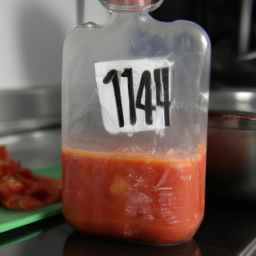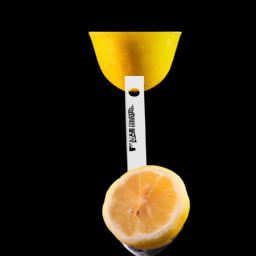Using the juices from a crock pot roast to make gravy is a fantastic way to elevate the flavor and richness of your meals. This simple technique calls for just a few basic ingredients and is perfect for making the most of any leftover roast juices.
In this article, I’ll show you how to make gravy from crock pot roast juice step-by-step, so you can enjoy a delicious and flavorful gravy every time.
First, you’ll need to collect the roast juice from your crock pot. This juice is packed with flavor and nutrients, so it’s important not to waste it. Once you’ve collected the juice, you’ll need to remove the fat and strain it to get rid of any impurities.
Then, you’ll create a roux using flour and butter, which will thicken the gravy and give it a smooth texture. Finally, you’ll add the roast juice, season the gravy to taste, simmer it for a few minutes, and adjust the consistency to your liking.
With these simple steps, you’ll have a delicious and flavorful gravy that’s perfect for any occasion.
Key Takeaways
- Collect and strain roast juice to remove fat and impurities.
- Create roux using flour and butter to thicken gravy and give it smooth texture.
- Experiment with different thickening techniques and flavor variations.
- Season gravy gradually with flavorful seasoning and simmer on low heat to meld flavors together and create rich sauce.
Collect the Roast Juice
You’re gonna wanna grab a measuring cup and strain the juice from the crock pot roast into it. This juice is the key ingredient for making a delicious gravy. Don’t let it go to waste!
You can also use the roast juice for other recipes, like adding it to soups or stews for extra flavor. If you have leftover roast juice, don’t fret! You can freeze it for later use. Just make sure to store it in an airtight container and label it with the date.
When you’re ready to use it, just thaw it in the refrigerator overnight. Now that you have your roast juice collected, it’s time to remove the fat and get started on making the gravy.
Remove the Fat
Once the liquid has cooled, it’s easy to skim off the layer of fat that resembles a fluffy cloud on top. Removing the fat from the roast juice not only benefits your health, but also enhances the flavor of your gravy.
Here are a few reasons why:
-
Benefits of fat removal:
-
Reduces the calorie and cholesterol content of your gravy.
-
Prevents the gravy from having a greasy texture.
-
Allows the true flavors of the herbs, spices, and other ingredients to shine through.
-
Flavor impact of fat in gravy:
-
Fat can dilute the taste of your gravy and make it less savory.
-
The fat can also mask the flavors of the herbs and spices you’ve added to your dish.
-
Removing the fat ensures that your gravy has a rich, concentrated flavor that complements your roast beef perfectly.
Now that the fat has been removed, the next step is to strain the juice to ensure that the gravy is smooth and free of any unwanted bits.
Strain the Juice
After allowing the liquid to cool and removing the fat, it’s important to strain the remaining mixture for a smooth and delicious result.
Juice straining techniques can vary, but I find that using a fine-mesh strainer or cheesecloth works best. Simply pour the mixture through the strainer or wrap the cheesecloth around a bowl and pour the mixture onto the cloth. This will catch any remaining bits of meat or vegetables and give you a nice, clear juice to work with.
Once you have strained the juice, there are several alternative gravy thickening methods you can use. One popular option is to create a roux by melting butter in a saucepan and whisking in flour until it forms a paste. Then, slowly whisk in the strained juice until it thickens to your desired consistency.
This will give you a rich and flavorful gravy that pairs perfectly with your crock pot roast.
Create a Roux
Now it’s time to create a roux for our gravy. I’m going to melt some butter in a saucepan over medium heat.
Then, I’ll add flour and cook it for a few minutes until it turns a nice golden brown color.
Melt the Butter
Start by taking a chunk of butter and tossing it into the hot crock pot juice, letting it melt into a luscious pool of flavor that will have your taste buds begging for more. Not only does melted butter add a rich and creamy texture to the gravy, but it also helps to thicken the sauce and enhance the overall flavor profile. When it comes to melting butter, there are a few best practices to keep in mind.
Firstly, it’s important to use unsalted butter to avoid making the gravy too salty. Secondly, you can melt butter in a microwave-safe dish or on the stove over low heat. Be sure to keep an eye on it and remove it from the heat once it’s completely melted. Lastly, you can also use melted butter in a variety of other dishes, such as baked goods, sautéed vegetables, and popcorn. Now that the butter has melted into the crock pot juice, it’s time to move on to the next step of adding flour and cooking for a few minutes to create a roux.
Table:
| Tips for Melting Butter | |||
|---|---|---|---|
| Use unsalted butter | Melt on low heat | Remove from heat once melted | Can be used in a variety of dishes |
Add Flour and Cook
Let’s take this gravy to the next level by adding some flour and cooking it to create a deliciously thick and savory roux that’ll have your taste buds dancing with joy. Here’re some tips to help you get the most out of your flour and thicken your gravy like a pro:
- Alternative thickeners: If you don’t have flour on hand, try using cornstarch or arrowroot powder instead. They both work as effective thickeners and can be used in the same way as flour.
- Different flour types: Depending on your preferences, you can use different types of flour to achieve different flavors and textures. For example, all-purpose flour will give your gravy a mild and neutral flavor, while whole wheat flour will give it a nuttier and heartier taste.
When adding flour to the butter, make sure to whisk continuously to prevent lumps from forming. This’ll also help distribute the flour evenly and create a smooth roux. Cook the flour and butter mixture until it turns a golden brown color. This’ll give your gravy a deeper and richer flavor. Be careful not to add too much flour, as this can make your gravy too thick and pasty. A good rule of thumb is to use 1 tablespoon of flour per 1 cup of liquid.
Now that you have the perfect roux, it’s time to add the roast juice and bring your gravy to life.
Add the Roast Juice
To make the gravy, simply pour the flavorful crock pot roast juice into a saucepan and heat it up. Using leftover roast juice for other recipes is a great way to minimize food waste and maximize flavor.
In fact, the benefits of using a crock pot for roast cooking include the ability to capture and preserve all the delicious juices and aromas that would otherwise be lost in traditional oven roasting methods.
Once the roast juice is heated, it’s time to thicken it up. This is where the flour and constant whisking come in. By gradually adding flour to the heated juice and whisking constantly, you’ll create a smooth and rich gravy that’s perfect for pouring over your favorite side dishes.
Whisk Constantly
Now that we’ve added the roast juice to the crock pot, it’s important to whisk constantly to ensure that the gravy comes out smooth and lump-free. Whisking techniques are crucial in making a velvety gravy from roast juice. You can either use a traditional balloon whisk or an electric one to save time and energy.
However, one of the common mistakes that people make is that they stop whisking too soon. Gravy needs time to thicken, and whisking continuously helps to break down any lumps that form. Another mistake is using high heat, which can cause the gravy to scorch and taste bitter.
Low to medium heat and constant whisking are key to making a perfect gravy.
To move on to the next step, we need to season the gravy with salt and pepper.
Season the Gravy
After adding some salt and pepper, it’s time to give the gravy some much-needed flavor. I like to use flavorful seasoning like rosemary, thyme, and garlic powder to enhance the taste of the gravy. It’s important to add the seasoning gradually, while constantly stirring the mixture, to ensure that the flavors are evenly distributed.
Once I’m satisfied with the flavor of the gravy, I like to do a taste test to make sure it’s just right. If it needs more seasoning, I add it and continue to stir until it’s perfect. After all, the gravy is the star of the show, and it needs to be delicious.
With the seasoning complete, it’s time to simmer the gravy and let it thicken up. Transitioning into the next section, I like to keep the heat on low and continue to stir the gravy occasionally. By allowing the gravy to simmer, it will help all the flavors meld together and create a rich, delicious sauce that perfectly complements the roast.
Simmer the Gravy
Keep the heat on low and stir occasionally as the gravy simmers, allowing all the flavors to meld together into a rich and delicious sauce that perfectly complements your roast.
While the gravy simmers, you can experiment with different thickening techniques and flavor variations to make it truly your own. To thicken the gravy, you can add a slurry of cornstarch and water or a roux made from flour and fat. Be sure to whisk the thickening agent into the gravy slowly to prevent clumping.
For flavor variations, try adding a splash of red wine or balsamic vinegar for a tangy kick, or a tablespoon of soy sauce for a savory umami flavor. Once the gravy has reached your desired thickness and taste, it’s time to move on to adjusting the consistency.
Adjust the Consistency
Once you’ve achieved the desired thickness and flavor, it’s time to fine-tune the consistency of the sauce.
If the gravy is too thin, you can use cornstarch to thicken it up. Start by mixing 1 tablespoon of cornstarch with 1 tablespoon of cold water until it forms a smooth paste.
Then, gradually stir the paste into the hot gravy and let it simmer for a few minutes until it thickens to your desired consistency.
On the other hand, if the gravy is too thick, you can add a splash of wine to thin it out and give it an extra boost of flavor. Red wine pairs well with beef roasts, while white wine complements chicken or pork.
Start by adding a tablespoon of wine at a time, then taste and adjust as needed. Remember to let it simmer for a few minutes after each addition to allow the flavors to blend together.
Once you have achieved the perfect consistency and flavor, it’s time to serve and enjoy!
Serve and Enjoy!
To fully savor your deliciously thick and flavorful sauce, ladle it generously over your perfectly cooked meat or vegetables and relish in the harmonious blend of tastes and textures. Here are some creative serving ideas to make your meal even more enjoyable:
- Serve the gravy over a bed of creamy mashed potatoes for a classic comfort food pairing.
- Drizzle it over roasted root vegetables for a savory and hearty side dish.
- Use it as a dipping sauce for crusty bread or garlic knots.
- Mix it into your favorite pasta dish for a unique twist on traditional Italian cuisine.
Pairing suggestions can also elevate your meal to the next level. For a red meat roast, try pairing with a bold red wine such as a Cabernet Sauvignon or Syrah. For a lighter meal with chicken or vegetables, a crisp white wine like a Sauvignon Blanc or Pinot Grigio would be a great complement.
Don’t forget to garnish your dish with some fresh herbs or a sprinkle of Parmesan cheese for added flavor and presentation. Enjoy!
Frequently Asked Questions
What type of crock pot roast is best for making gravy?
For crock pot roast gravy, beef is better than pork. To enhance the flavor of the juice, use herbs like thyme and rosemary, and add a splash of red wine or Worcestershire sauce.
Can I use the leftover vegetables from the crock pot roast in the gravy?
Yes, I like to use the leftover vegetables from my crock pot roast in my gravy. I puree them and add them to the gravy for a richer flavor. It’s a great way to enhance the taste and make use of everything.
How long should I simmer the gravy for?
Simmering tips are crucial for great gravy. I suggest simmering for 10-15 minutes to thicken the sauce and blend flavors. Enhance the taste by adding herbs, spices, or cream.
Can I make the gravy ahead of time and reheat it?
Yes, I recommend making the gravy ahead of time and reheating it. It saves time and allows the flavors to meld. To enhance the taste, try adding herbs or a splash of wine.
Can I use cornstarch instead of flour for the roux?
Yes, I prefer using arrowroot powder instead of cornstarch for thickening techniques. It creates a smoother texture and is also a great gluten-free option. However, it’s important to dissolve it in cold water before adding it to hot liquid.
Conclusion
In conclusion, making gravy from crock pot roast juice is a simple and delicious process that can elevate any meal. Collect the roast juice, remove the fat, and strain the juice. Create a roux, add the roast juice, and season and simmer the gravy. By following these easy steps, you can create a savory and flavorful sauce that perfectly complements your roast.
So next time you cook a roast in your crock pot, don’t let the juice go to waste! Use these steps to make a delicious gravy that will impress your family and guests. Whether you’re serving it over mashed potatoes, roasted vegetables, or the roast itself, this gravy is sure to be a crowd-pleaser.
Give it a try and enjoy the delicious results!
Ilana has been a vegan for over 10 years. She originally made the switch for health reasons, but soon found herself becoming more and more passionate about the ethical and environmental implications of a vegan lifestyle. Ilana is the author of The Graceful Kitchen, a blog all about veganism. She loves to cook up delicious and nutritious vegan meals, and share her recipes with others who are interested in leading a cruelty-free life. Ilana is also a strong advocate for using whole foods as the foundation of a healthy diet, and believes that going vegan is one of the best ways to achieve this.










